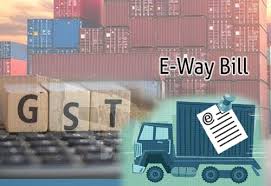GST E-Way Bill – Recent Changes
GST E-way bill is an electronic way bill for movement of goods which can be generated on the GSTN. E-Way Bill is mandatory for the ‘movement’ of goods of more than Rs 50,000 from 1st Feb 2018.
In 24th Meeting of GST Council take the following decisions regarding E Way Bills:
The nationwide e-way Bill system will be rolled out on a trial basis latest by 16th January, 2018.Trade and transporters can start using E-Way Bill system on a voluntary basis from 16th January, 2018.While the E-Way Bill system for both inter-State and intra-State e-way Bill generation will be ready by 16th January, 2018, the States may choose their own timings for implementation of GST e-way Bill for intra-State movement of goods on any date before 1 st June, 2018.With effect from 1 st February, 2018. This will bring uniformity across the States for seamless inter-State movement of goods.When E-Way Bill Generated:
Every registered person whose movement of goods of consignment value exceeding fifty thousand rupees
In relation to a supply;For reasons other than supplyDue to inward supply from an unregistered person.Supply in E-Way Bill:
A supply may be –
Supplied for a consideration (means payment) in the course of businessSupplies made for a consideration (payment) which may not be in the course of businessSupplies without consideration ( without payment)Basically supply means –
Sale – sale of goods and payment made Transfer – say branch transfers
Barter/Exchange – Payment by goods instead of money.
Validity of GST E-Way Bill:
| Distance | Validity |
| Less than 100km | 1 day |
| 100km to 300km | 3 days |
| 300km to 500km | 5 days |
| 500km to 1000km | 10 days |
| 1000km or more | 15 days |
Documents to be carried:
The person in charge of a conveyance shall carry —
The invoice or bill of supply or delivery challan, as the case may be;

Copy of the e-way bill or the e-way bill number, either physically.
Delivery challan, where the goods are transported other than by way of supply.
Who can generate E-Way Bill:
| Who | When | Annexure Part | Form |
| Registered person in GST | Before movement of goods | Complete Part A | Form GST INS-1 |
| Registered person is consignee or consignor | Before movement of goods | Complete Part B | Form GST INS-1 |
| Registered person is consignor or consignee and goods are transferred over to the transporter of goods | Before movement of goods | Complete Part A & B | Form GST INS-1 |
| Transporter of Goods | Before movement of goods | Complete Form GST INS-1 if consignor does not | – |
| Recipient is registered to the unregistered person | Compliance to be done by Recipient as if he is the Supplier | – |
Inspection and verification of goods:
A summary report of every inspection of goods in transit shall be recorded online by the proper officer in Part A of FORM GST INS – 03 within 24 hours of inspection and the final report in Part B of FORM GST INS – 03 shall be recorded within 30 days of the inspection. The physical verification of goods being transported on any conveyance has been done during transit at one place within the State or in any other State, no further physical verification of the said conveyance shall be carried out again in the State, unless specific information relating to evasion of tax is made available subsequently
The guidelines said that, “Where a vehicle has been intercepted and detained for a period exceeding 30 minutes, the transporter may upload the said information in (prescribed form) on the common (GSTN) portal.